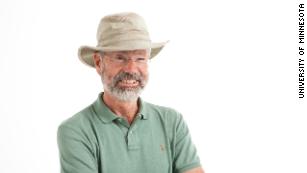John Merryfield
I’m in the checkout line at the supermarket. Six feet separates me from the people in front of me unloading their groceries onto the conveyer belt. Behind their N95 facemasks I can see the anxiety in their eyes.
They’re leaning as far away from the cashier as possible to maintain a safe zone around them. It’s hard for me not to notice the items being tallied as the red scanner beeps loudly. Pearl onions, chili powder, People magazine, Wisconsin cheddar cheese, chicken wings, BBQ sauce. Then it occurs to me. We’re doomed. This is it. We are in over our heads, and we’re not going to make it.
This is, by any measure, the largest health emergency of my, over-half-century-lifetime. A viral pandemic sweeps the globe. A sickness unleashed by our human exploitation of animals in an Asian meat market, and our response? Quarantine us at home with dry rubbed chicken wings with BBQ sauce.
I know what you’re thinking. Damn! That sounds delicious! Am I right? OK. Let’s pull the lens back to wide angle for a minute and have a look around.
It’s almost as if nature, and the animals themselves are holding up a protest sign, arms extended overhead, marching down main street, saying ENOUGH IS ENOUGH!
A majority of emerging infectious diseases in humans — including COVID-19, Mad Cow Disease, Bird Flu, MERS, SARS, Ebola, HIV, Swine flu, and cholera all came from animals, and how we treat them.
Bird flu came from chickens. Swine flu came from pigs. Mad Cow Disease came from cows. Ebola came from bats. And now COVID -19 seems to have originated from a nasty meat-market cocktail of slaughtered pigs, dogs, cats, bats, turtles, chickens, and pangolins. Just in case our ethnocentric defenses were raised when considering the food habits of people in a faraway land. Keep in mind, that animals on industrial factory farms in the good-ole U.S. of A. are so highly confined that the only defense against bio-catastrophic viral outbreaks are massive amounts of overused antibiotics. Antibiotics passed on to us through the food system. Antibiotics that will no longer work given that these mutant viral eruptions have clever tendencies to overcome.
It’s almost as if nature, and the animals themselves are holding up a protest sign, arms extended overhead, marching down main street, saying ENOUGH IS ENOUGH! Stop exploiting us! But are we listening? Is this new pandemic enough for us to take a look at how we exploit and consume animals? After all, our own existence is in jeopardy. It’s obvious, what we’re doing to animals is killing us, too.
I’ve had a plant-based diet for over 35 years. I had my own mini-awakening when examining our unhealthy meat-centric food system.
I learned that a vegan diet produces the equivalent of 50% less carbon dioxide, uses 1/11th oil, 1/13th water, and 1/18th land compared to a meat-lover for their food. Each day, a person who eats a vegan diet saves 1,100 gallons of water, 45 pounds of grain, 30 square feet of forested land, 20 pounds CO2 equivalent, and one animal’s life.
As a matter of fact, the World Health Organization recommends a plant-based diet to help prevent obesity, heart disease and type-2 diabetes.
Forgive my hyperbolic meltdown in the supermarket earlier when observing the general public’s food choices. I’m not as hopeless as my melodramatic self claims to be. More and more people are making the connection that eating plants instead of animals is healthier for us, more sustainable for the earth, and obviously a better deal for animals.
I’ll ask the question we’re all thinking. But why are vegans so annoying? I know, I know, we can be.
I don’t have the answers to all of our questions. But there is one thing I do know, our exploitive relationship with animals and nature is the reason why the world is on lockdown, and choosing to eat plants instead of animals is a giant step toward a better future.
John Merryfield lives in Tahoe City.
-
A trending article titled “Special delivery: Area businesses providing pick-up, take-out, delivery service” with 1 comment.





 Wolves are seen in a 2009 handout image on Isle Royale National Park, Michigan. (Michigan Technological University, Rolf O. Peterson)
Wolves are seen in a 2009 handout image on Isle Royale National Park, Michigan. (Michigan Technological University, Rolf O. Peterson)










